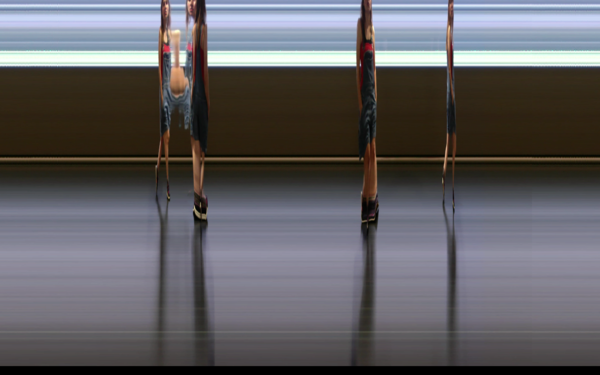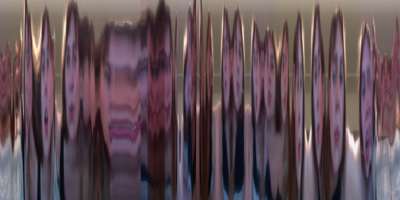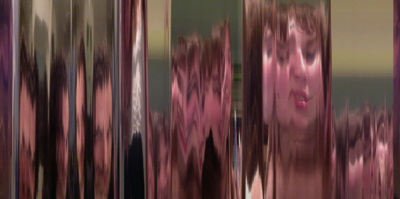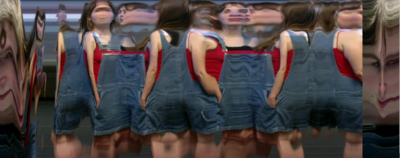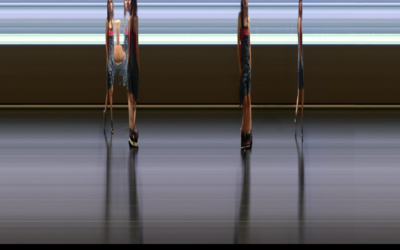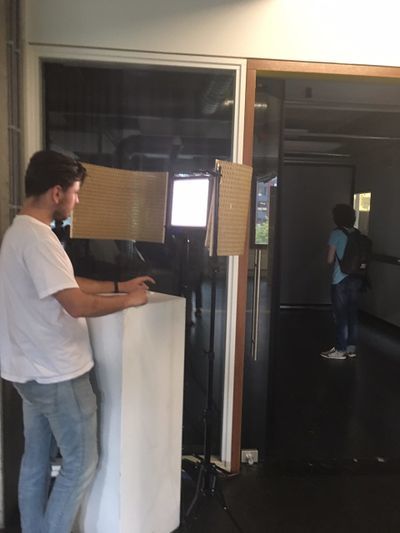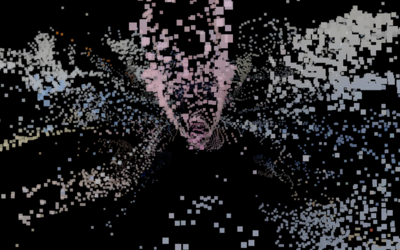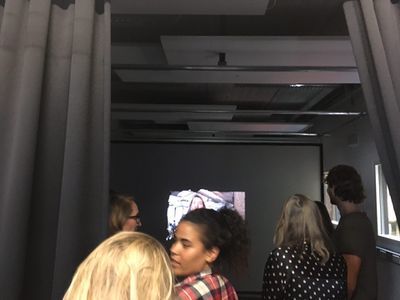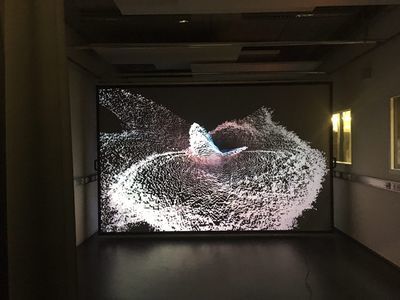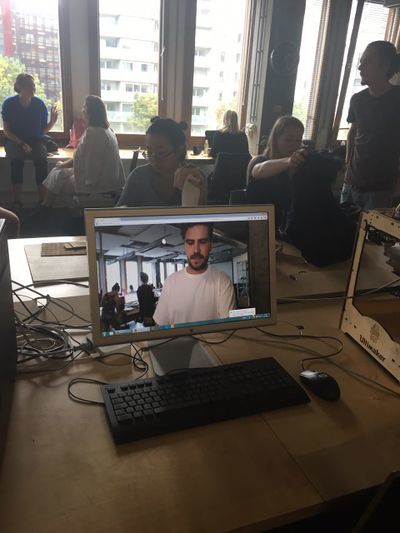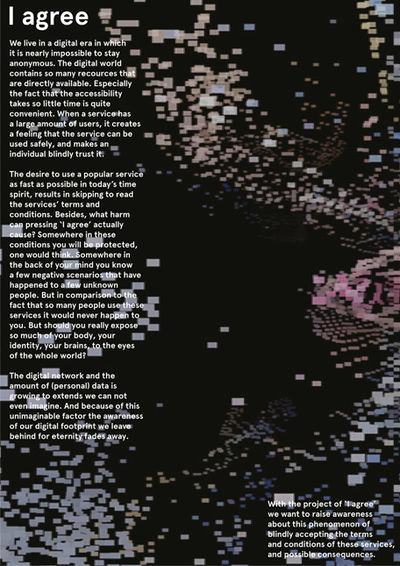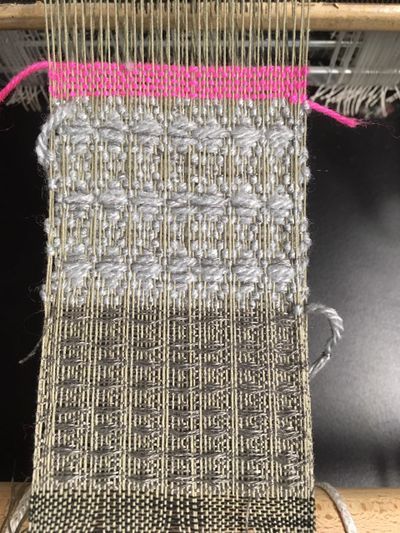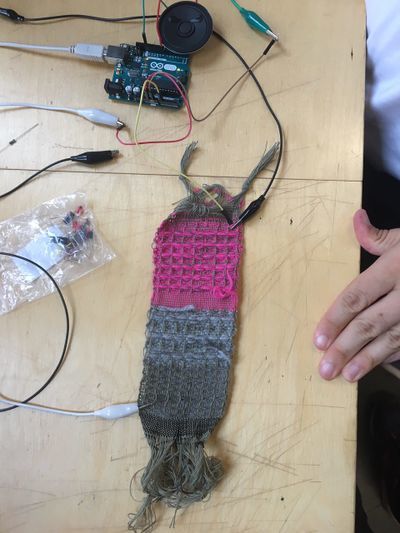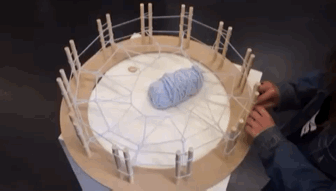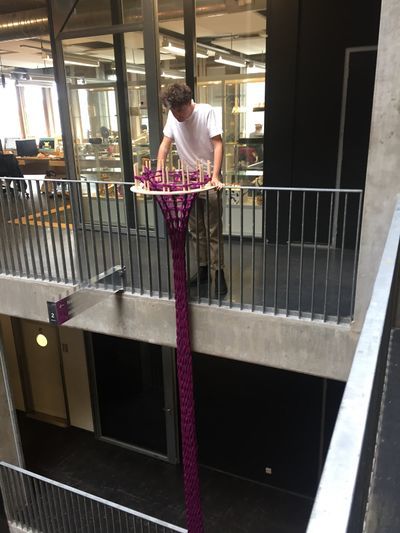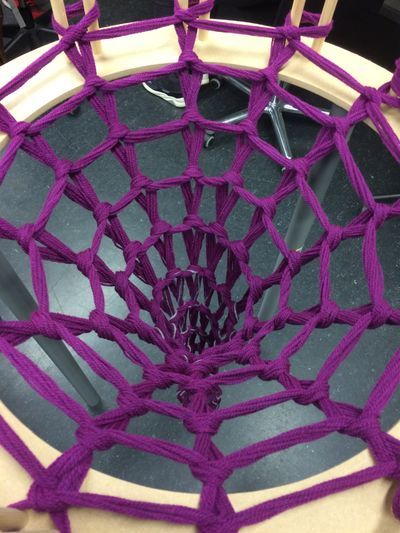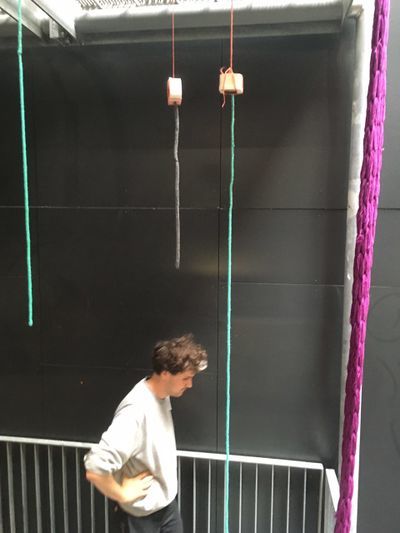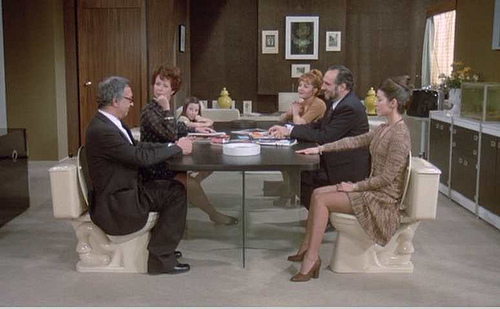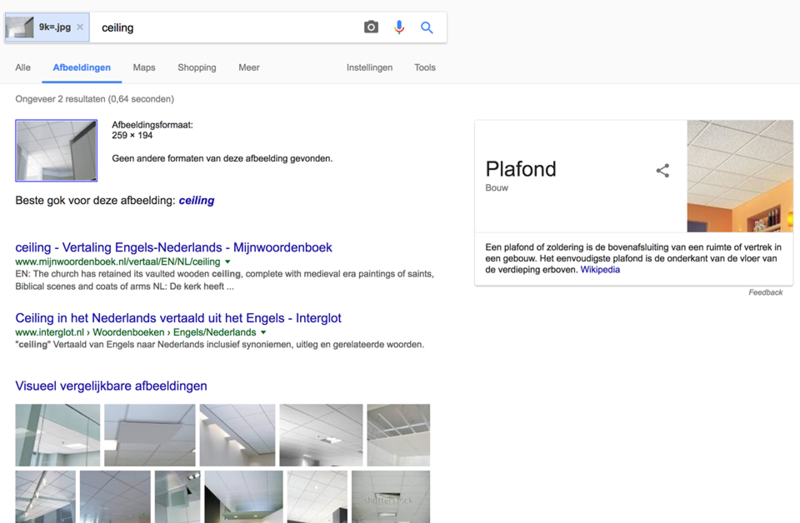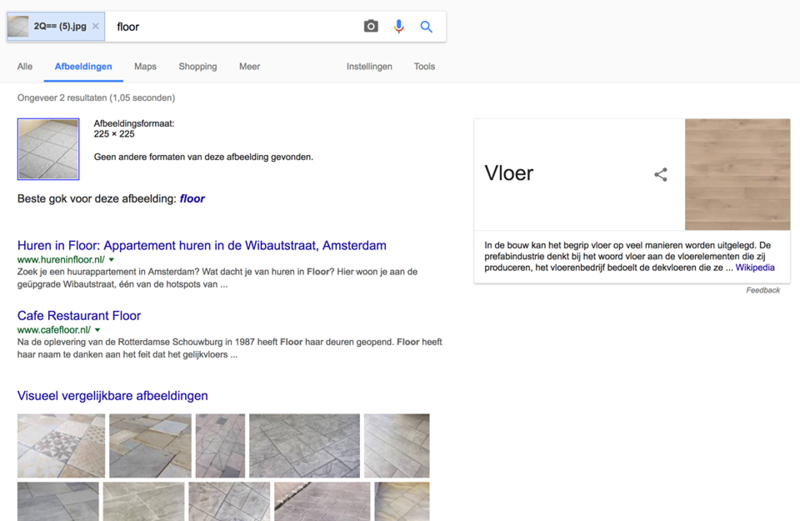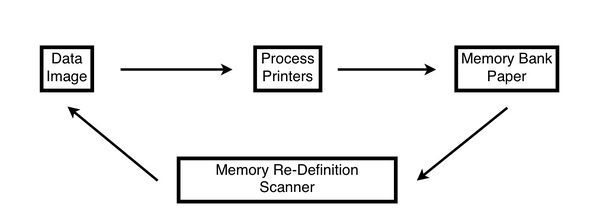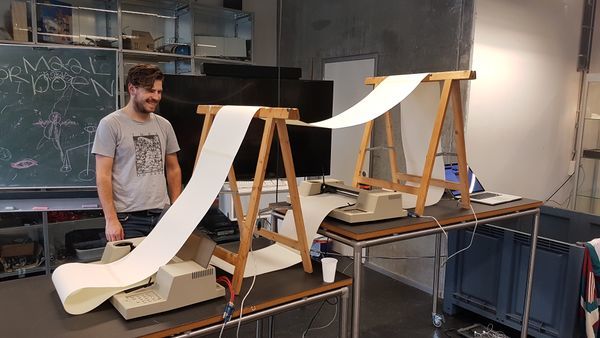Difference between revisions of "User:Vera/minor"
| Line 193: | Line 193: | ||
</center> | </center> | ||
| + | <center> | ||
== Project 3: Mind (of) the Machine == | == Project 3: Mind (of) the Machine == | ||
| − | + | ||
'''Reconstructed Memories Workshop''' | '''Reconstructed Memories Workshop''' | ||
| Line 221: | Line 222: | ||
<center> | <center> | ||
| + | |||
==Unknowing Painting == | ==Unknowing Painting == | ||
Revision as of 22:42, 24 October 2017
Project 1:On The Body
SANNE and PHILIP
DWARING A BODY PART -
sanne - eye
philip - brains/mind
vera- the hole body in one line
Project 2:SENSOR
JEANINE and THARIM
Project 3: Mind (of) the Machine
JOCHEM and TIMO
Contents
Project 1:On The Body
First day of the ditial craft minor.
draw a body part just a body part. so i draw a body in one line.
FIRST IDEA SLITSCAN
eye, brain, the hole body in one line.
Recreate a full image off movings.
Slitscan, the first prototype of taking pictures using the webcam. Using a program called 'Processing' we literally abused someone's body by deforming it:
Before you are able use 'I agree' you have to agree to the terms and conditions
Have you read the terms of use?
No. Have you accepted them? Yes.
You probably have never thought about the possible consequences of signing a contract which you have not read.
Although millions of people do it everyday,
by pressing ‘I Agree’ at the end of every pop up screen of terms of and conditions you come across.
Thank you for letting us confiscate your personal freedom.
By blindly accepting the terms and conditions,
you have officially lost control over your rights regarding the service you are using.
From this moment,
your personal data are now under copyright of I agree, or any other service you agreed to use.
And because of this unimaginable factor the awareness of our digital footprint we leave behind for eternity fades away.
Congratulations,
you have now exposed yourself to the whole world (wide web) to see.
Your identity is now forever stored on the web.
Your online ID will forever be accessible for the eyes of everyone.
Concept
We live in a digital era in which it is nearly impossible to stay anonymous. The digital world contains so many recources that are directly available.
Especially the fact that the accessibility takes so little time is quite convenient.
When a service has a large amount of users, it creates a feeling that the service can be used safely, and makes an individual blindly trust it.
The desire to use a popular service as fast as possible in today’s time spirit, results in skipping to read the services’ terms and conditions.
Besides, what harm can pressing ‘I agree’ actually cause? Somewhere in these conditions you will be protected, one would think.
Somewhere in the back of your mind you know a few negative scenarios that have happened to a few unknown people.
But in comparison to the fact that so many people use these services it would never happen to you.
But should you really expose so much of your body, your identity, your brains, to the eyes of the whole world?
The digital network and the amount of (personal) data is growing to extends we can not even imagine.
And because of this unimaginable factor the awareness of our digital footprint we leave behind for eternity fades away.
With the project of ‘I agree’ we want to raise awareness about this phenomenon of blindly accepting the terms and conditions of these services, and possible consequences
[edit] Research
'I agree' consists of a webcam attached to a long pole standing straight, with a spotlight shining in the background. A welcoming voice of a woman beckons people to come closer and asks if they will agree to see what's next. If they agree, she tells them to press the button. Pressing this button will make the webcam take your picture and spread it to multiple screens throughout the room.
We became interested in further 'abusing' and deforming the body in a digital way. So we thought further into how this actually happens online in any sort of way. The most interesting thing we could think of was the fact that our pictures and other content gets abused by services we use. That is where the concepts originated from.
'I agree' consists of a webcam attached to a long pole standing straight, with a spotlight shining in the background. A welcoming voice of a woman beckons people to come closer and asks if they will agree to see what's next. If they agree, she tells them to press the button. Pressing this button will make the webcam take your picture and spread it to
=people they I AGREED'
final product
SENSORS AND SENSITIVITY
Start making a sensor, fabric waving with conductive dreath. Waving in this structure makes a honeycomb, it gives hight to the fabric to make a press sensor.
a honycomb it's some natural material make's by nature. The sensor with the conductive thread make's from some humen's artifact.
behavioural stretching
Jeanine and Tharim first experions with franch knitting, Tim what wat minder plazant er mee, because it was his evil eye workshop.
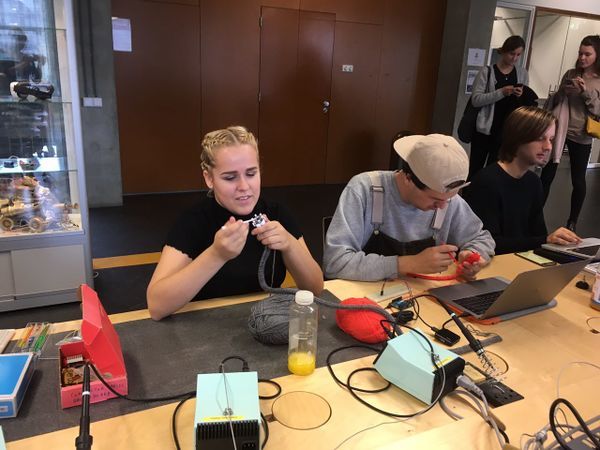
First exampels, a bonsing sensor in ardino and woven threat with conductive threat to ardino
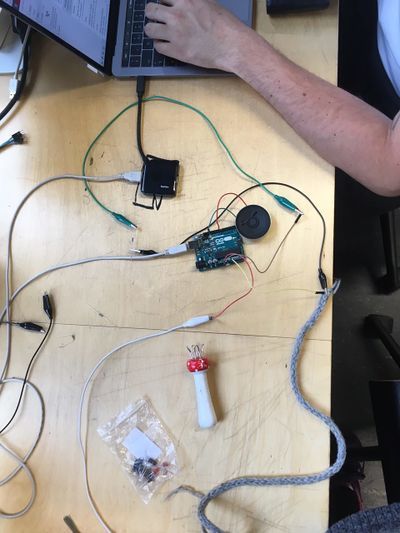
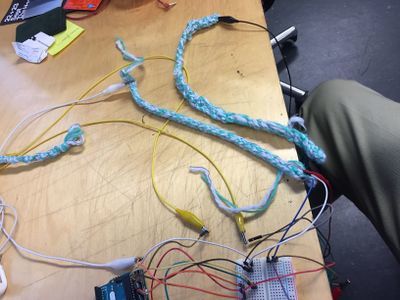
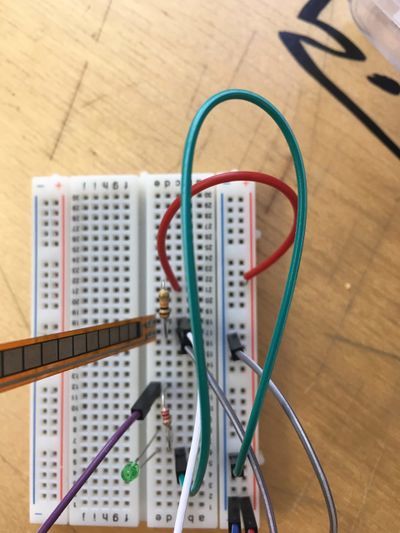
We programmed the arduino so that it translated the serial data to frequencies. For example, when the cord is in resting position the arduino monitor would read 520 and when we pull the string it would read 960. We would map the arduino to output a frequency of 0hz when it reads 520 and 1000hz when it reads 960.
The serial data received from the arduino could be used in many ways. We also experimented with other sounds and samples by connecting the serial port (where the arduino was attached to) to Ableton live. The sensor could trigger all sorts of instruments, effects, and automation. We didn’t use this way of working in the end because you always had to be near a computer to use the sensor.
starting france knitting
For our presentation, we wanted to connect the result of pulling the string to the action that was needed to pull the string. The group of third-year students had made some videos that inspired us. In their video, they exaggerated the movement the body makes while stretching.
It gets interesting when you can make people do stuff without necessary commanding them to. We wanted to make people stretch without them being aware that that was our purpose. To achieve this we placed several chords on different heights in the staircase. By curiosity or simply because they were confronted with a strange object in the -semi-public space people would pull or touch -accidentally- the cord. When noticing there was a sound coming out of it, they would reach higher and higher for the other cords.
You could say that in the end the artifact was not only the cord, but the people stretching to pull the cord.
NEXT
On numerous occasions, we discussed how we could place this cord in our everyday life. The cord is strange, yet pulling it and hearing the sound feels so familiar and normal at the same time. We wanted to give this cord in some way a place in daily life.
Inspiration for exeqution was the well known movie: The Phantom of Liberty
Project 3: Mind (of) the Machine
Reconstructed Memories Workshop
Artificial Intelligence
Floor of Ceiling?
Artificial Intelligence is most of the time based on face recognition algorithm's. They work with familiar faces from celebrities and animals.
Floor of Ceiling is based on not the usual libery's that you can find about racongition. it's a space and the Artificial Intelligence can learn it wrong. we chiche to do this to play with the Artificial Intelligence of the computer themself. computers can't be angry about the fact that we give the wrong input.
So we try this also at google image and google image make from the ceilng a floor and from the floor a ceiling. it it's a very small exampel but it was a kind of funny because it is even hard for human beinig to recanze also the floor of ceiling. But human beiging have some persepion what is good or wrong.
Unknowing Painting
Project “Unknowing Painting“ comments on the process of memory, it investigates the borders between human and artificial memory through the act of forgetting. Forgetting is a creative activity that, through transformation and procedural loss of data, continuously animates our inner life and identity definition. To comment this human condition we set a paper loop through an array of printers, a mechanical analogy for the stream of memory creation. An image, an untitled painting of an old man by an unknown artist, is initially fed to the system, then the printed rendition is scanned and sent to the printers to begin a new cycle. As we travel through the cycles, as we travel through past memories, we start encounter variations and loss of data, the face become distorted and slowly the story and emotions summoned by its shape change and get lost in the growing feedback
